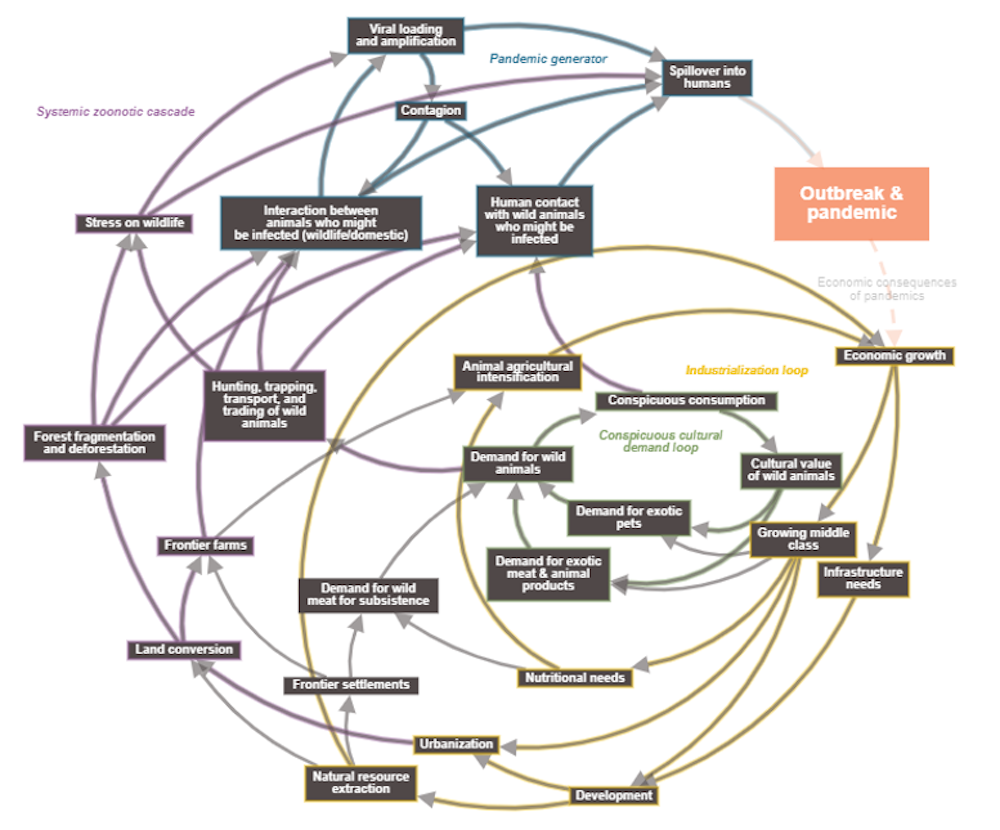WWF just conducted a fascinating presentation on Preventing Pandemics which I want to share with you. Basically if we don't stop destroying nature, killing and consuming animals, we will have even more lethal pandemics.
I want to thank Annika Terrana, Manager, Forests, WWF-US, who provided this for WWW.
I hope you find this information here as fascinating and informative as I have. Your support of WWW ensures in so many ways, that you are doing your part to help save the wild world, people and animals from continued destruction. Again, thank you for your incredible support. We need it desperately!
WWF National Council Briefing
PREVENTING PANDEMICS
Rebalancing our relationship with nature sits at the heart of a sustainable global recovery from the impact of COVID-19. WWF engaged in a strategy “deep-think” to better understand the system dynamics that give rise to the spillover of animal disease into human populations and the role conservation could play in reducing the risk of spillover in the future. The risk of a spillover is increasing with our increasing intrusion into tropical and sub-tropical forests and, because of this, conservation has a role to play in reducing the risk. In response to this, WWF developed a conceptual framework based on our global systems understanding with a regional focus. The result is a map of the “zoonoses system” loops that has helped define the range of conservation actions needed to truly prevent pandemics rather than continually chasing recovery. The systems map is driven by interlocking cycles of growth and demand and illustrates how the existing zoonoses system involves a cascade of negative impacts that in turn exacerbate the drivers all over again. Using this map, bottlenecks can be defined along with key pressure points and a range of conservation solutions that should be considered in any robust strategy to prevent outbreaks.
Amplifying Risk In Value Chains
WWF created a visual of Amplified Risk for zoonoses in Value Chains, seen in the image above. The value chain involved in the intrusion into habitats and interactions with mostly live wild animals spans regions and continents and creates new and different mixes of species, including pathogens, as both live wild and domestic animals are raised, caged, transported, sold, slaughtered, and eaten together. These novel interactions result in a series of social-ecological conditions that are highly favorable for the emergence of new zoonotic diseases, such as COVID-19. Downstream in the risk of value chains (on the right side of the image above), there is higher leverage because there is inherently direct risk for spillover. The potential spread of spillover increases as we move downstream, as viruses mutate, viral loading increases, and people become much more connected. At the same time, spillover becomes harder to prevent and the outbreaks more costly to control—keeping forests intact in areas of high biodiversity can stop spillover before it ever occurs, reducing risk all across the board. WWF applied this model to all geographies to identify the nodes of most impact along this value chain, depending on local rates of forest loss, farming practices and interactions with wildlife.
There is an opportunity for transformative change, recognizing that periods of great uncertainty often offer windows of opportunity to radically transform the system behaviors, structures, and underlying norms and values that govern our global society. While there is more research needed, the link to environmental degradation is clear. COVID-19 is unlikely to be “Disease X” or “the big one” that scientists have been warning about for years. We should expect more outbreaks to come. But the good news is that there are solutions already taking place that can have the co-benefit of reducing threats to disease if we are intentional about learning from this pandemic moving forward.




